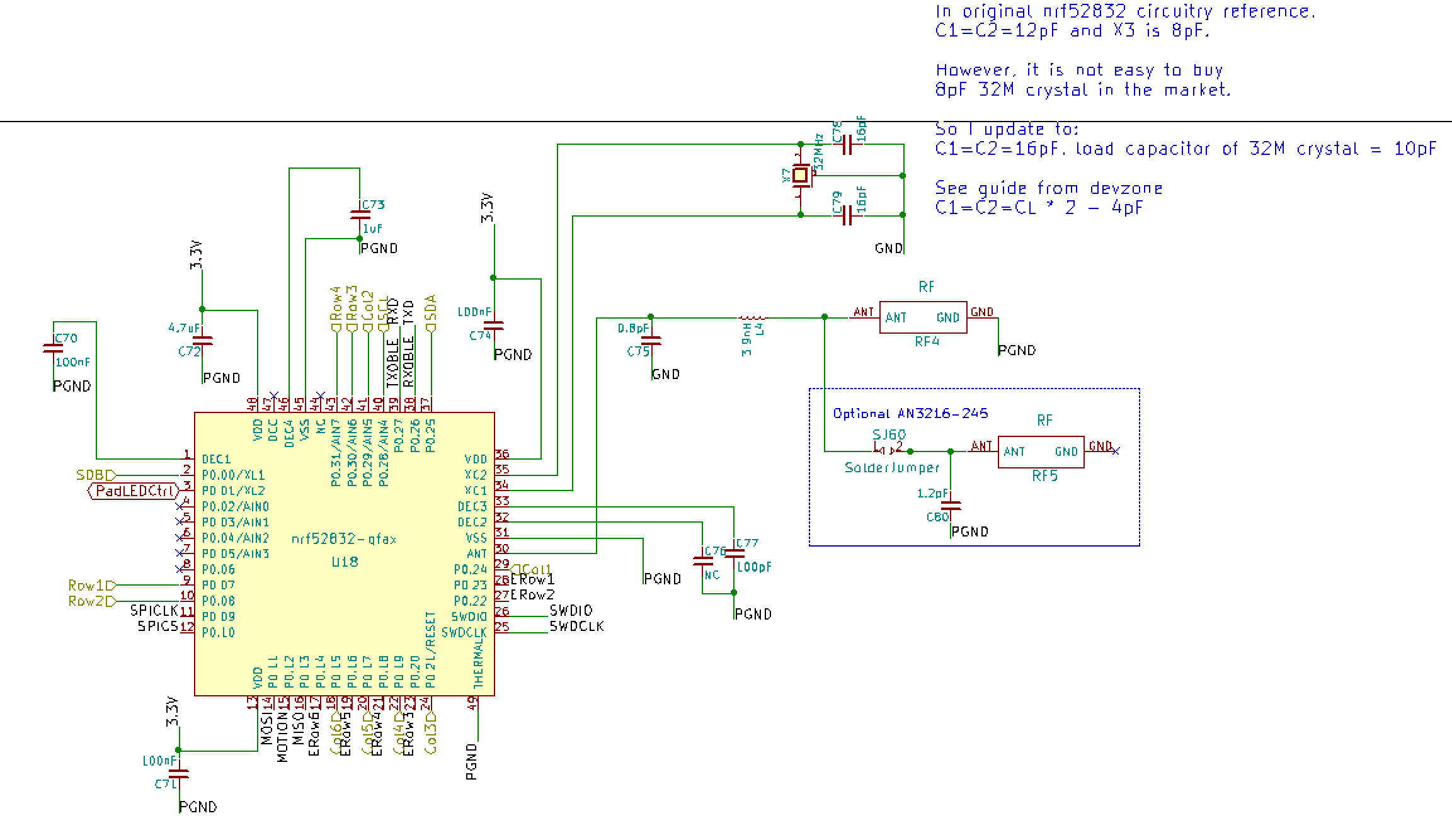Hi,
I am working on a custom design for NRF52832. The schematic and pcb layout are as follows. However, it seems that I can not get the signal working correctly. Would you please take a look and give me some tips/advices/suggestions? Thank you very much.
The custom board is just for a small keyboard which is space limited. For testing, I am using pcb antenna only. I soldered 2 boards and both of them have the same problem:
-
Use SWD to burn softdevice and hrs sample(removed the external LFCLKSRC and turned on RTT logging)
-
It doesn't show in nRF connect/toolbox
-
I tried other samples like hid_keyboard, still the same problem: It doesn't show in nRF connect/toolbox/iOS/android.
-
No any errors prompt in RTT logger.
I suspect this is a pcb antenna design issue. However, by reading a lot from infocenter, still I can not find what the problem is. Should I solder a shunt capacitor in C76?
According to the guideline here: devzone.nordicsemi.com/.../ I am using:
-
X7 = 32M crystal, load cap = 10pF
-
C79=C78 = 16pF
-
nRF52832-QFAA, 2 layers, 1.6mm thickness, and FR-4 dielectric.
-
To avoid side effects, all other components like LEDs are not soldered in my testing boards.

 (Left side is Back copper layer and right side is the Silk layer)
(Left side is Back copper layer and right side is the Silk layer)
My Dev environment: Windows 10, Jlink 5.12f, SDK 13.0.0. Please let me know if you need further information. Thanks very much.
Yours sincerely,
Vincent


